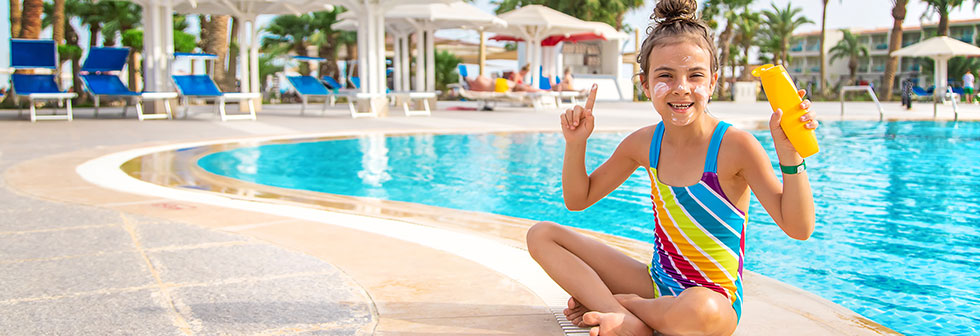BY JUDIT VÍTORES-SYPHER
Journalist – Broadcaster
www.juditvitores.com
Summer has arrived, and with it come the risks of skin damage from being outdoors. Exposing yourself to limited sunlight has positive effects on the body, such as the synthesis of vitamin D that strengthens bone structure. However, UVA and UVB radiation produce harmful effects such as sunburn, premature photoaging, skin spots, and skin cancer.
All skin types should be protected from the sun’s rays, including those with darker skin. Studies reveal that in just 10 years the incidence of cancer has increased by 400% worldwide.
The use of sunblock starting in childhood can help reduce the risk of early onset skin cancer and photoaging induced by ultraviolet radiation. Specialists recommend using a protection factor greater than SPF50, wearing a hat, and staying well hydrated. Parents should have sunblock on hand always. It is also important to teach children to protect themselves before sun exposure. People should avoid being outside during the hours that the sun is strongest, in the middle of the day. Remember that if any skin stains or melanoma show up, you should visit the doctor. You should also seek the advice of a professional if a new mole or existing mole has changed in size, shape, or color.
Warning signs:
ABCDE’s of Skin Cancer
Asymmetry: if you draw a line through your mole and the two halves do not match.
Border: an early melanoma tends to be uneven, scalloped or notched.
Color: moles can come in a variety of colors. Different shades of brown, tan, or black can appear. They may also become red, white, or blue.
Diameter: melanomas are usually larger in diameter than the eraser on your pencil.
Evolving: see a doctor if any change in size, shape, color, or elevation occur.
Cuidado de la piel durante el verano
Llegó el verano y aumentan las actividades al aire libre, pero también crecen los riesgos de dañarse la piel. Exponerse al sol con precaución tiene efectos positivos para el organismo como la síntesis de vitamina D que fortalece la estructura ósea. De todas maneras, los rayos UVA y UVB producen efectos dañinos, como quemadura solar, foto envejecimiento prematuro, manchas de la piel y cáncer cutáneo.
Todos los tipos de piel deben protegerse de los rayos del sol, inclusive las pieles morenas.
El uso de protectores solares desde la niñez puede ayudar a reducir el riesgo de la aparición temprana de cáncer de piel y el foto-envejecimiento inducido por las radiaciones ultravioletas. Los especialistas recomiendan utilizar un factor de protección superior a 50, incorporar el uso de gorros y mantenerse bien hidratados. Los padres deberían tener una crema de protección solar a mano en todo momento. También es importante enseñar a los hijos a protegerse antes de exponerse al sol y evitar hacerlo en las horas que el sol está más fuerte.
Recuerda que cualquier mancha o melanoma que muestre una reacción extraña, un lunar nuevo o uno existente que haya cambiado en tamaño, forma o color, es señal de visitar al médico.
Señales de advertencia: el ABCDE de la piel
Asimetría: la mitad del lunar o marca de nacimiento no corresponde a la otra mitad.
Borde: irregulares, desiguales, dentados o poco definidos.
Color: el color no es uniforme y pudiera incluir sombras color marrón o negras, o algunas veces con manchas rosadas, rojas, azules o blancas.
Diámetro: el lunar mide más de 6 mm. de ancho, aunque los melanomas algunas veces pueden ser más pequeños.
Evolución: el tamaño, la forma o el color están cambiando.





